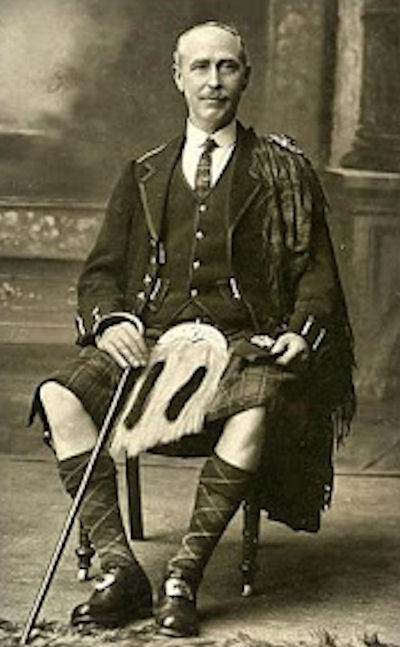Dolina Mackay, from Armadale to United States 1906
Let me tell you about my grandmother Dolina McKay. She was not famous nor held any important station or position during her lifetime, but came from fisherman/crofter stock that lived their lives as best they could. It is through her and my mother that I feel a deep connection to the soil of Scotland. Each time I visit the Highlands, I cry in delight ………and cry again when it‘s time to leave.
Dolina McKay was born 10 Nov 1877, at Armadale, Farr, in Sutherland to her parents, Angus McKay, a fisherman, and Henrietta McKay, maiden surname McKay. Her parents listed marriage date is January of 1860. She was the 8th child born to her parents, and was to be one of only four children that survived into adulthood. Her siblings in order of birth were:
Betsy 1861-1870, Donald 1862-1869, George 1864- died in fishing accident after 1919, Neil 1866-1870, William 1869-1938, Elisabeth 1872-1940, Dolina 1874-1875 and an infant girl 1881-1881 (3 days).
Dolina’s young life was spent in Armadale with her parents, two older brothers and one sister. Family stories tell us that because George was the oldest and prospects were poor in Scotland at that time, her brother William and sister Elisabeth “Bessie” left Scotland and immigrated through Canada into the United States in the late 1880’s. They both married and had families in the US.
In 1893, at Armadale, both of her parents passed away within a month of each other, leaving her (age 16) with her brother George who was 29 and single. In 1897, George married a woman that, it is said, Dolina did not care for and shortly after that she is pregnant and unmarried. Family stories tell us that she wanted to marry but her brother and sister-in-law forbade it. She obviously left the residence because the child was born May 1898 in Janetstown, Caithness. In November of 1898 she turned 21, and just 7 months after the birth of the child she and James Wares, married on 13 Dec 1898 in Thurso, Caithness. They had five children between the years 1898 and 1905, one of them was my mother Johan Dolina Wares, born in Nig. Ross & Cromarty, Scotland, 1904.Perhaps her brother was correct about the marriage as it appears it was a thing to “escape” from. In 1906, the records at the Orphan Homes of Scotland, Bridge of Weir foundling home, document that she and the five children were brought to Glasgow by a Sheriff. He assisted her in placing the four oldest children in the home while she arranged to join her brother in the United States. She kept the babe in arms (5 months) with her. These same records indicate that James Wares was not "missing" as we had been told for years, but was in jail awaiting trial for fire setting.
Dolina, at age 27, departed on 26 May 1906, from Glasgow, with a destination port of Montreal, Canada. The manifest for this record is on the "Numidian", of the Steamship Line, Allan Line, Royal Mail Steamers and State Line. United States Immigration records show that she arrived in Quebec on 6 June 1906 with a final destination of Duluth Minnesota, and had a ticket paid for by her brother who lived in Duluth, Minnesota. What must she have felt traveling to a new country alone, with a small infant, leaving her other children behind ?Although she had left four young children in Scotland, and had to find a new life in the United States to support them and the child she had brought over with her, and there were offers to adopt her children at the foundling home, she would not allow any of them to be adopted. Dolina was finally able to send for the children and they sailed to Canada on June 27, 1908 from Glasgow aboard the “S.S.Ionian”, scheduled to land on July 5, 1908 in Quebec. Johan (my mother) was only four years old at the time, but they traveled with a large number of children from the orphan home that were being escorted to Canada for adoption/farm work. After being quarantined in the children’s hospital for some type of communicable disease, they were put on a train to Sault Ste Marie, on the Ontario Canada/Michigan USA border, then onto another train to Duluth, Minnesota.For a number of years she lived the “city life” in Duluth, Minnesota but eventually moved to the state of Washington.
In Washington, she purchased land in the San Juan Islands and began farming sheep. The farm was surrounded on two sides by the sea, and the terrain was rocky and hilly. The area was without electricity, sewer, or city water. Unbeknownst to me, this was in many ways a return to what she had known all her young life and it was not until I saw the seashore, hills and rocks of the highlands that I know what she must have felt toward this land. It was not an easy life for a woman and she worked hard to keep it going, many times not being sure where the next seed money would come from. She never returned to Scotland and this farm is where she lived until her death in 1966 at the age of 88 years.
As of 2009, all of her siblings and children are now gone but there are many of us still continuing the lives that they brought to the United States.There is much to be admired of her strength both physically and mentally, many would consider her accomplishments “small” in a lifetime, but she stands in my eyes as a person to be much admired.
Submitted by Lucy M. Abbott (Campbell, Wares, McKay)









